Microwave Staring Correlated Imaging Based on Unsteady Aerostat Platform
Abstract
:1. Introduction
2. MSCI Method Based on Unsteady Aerostat Platform
2.1. Imaging Scene
2.2. Real-Time Position Vector of Antenna
2.3. Influence of Platform Motion on Beam Coverage
2.4. Imaging Equation
3. Estimation of Translational Speed and Rotational Angular Velocity
4. Simulation
4.1. Verification of the Proposed Model
4.2. Effect of Different Translational Components on Imaging Performance
4.3. Effect of Different Rotation Components on Imaging Performance
4.4. Effect of the Position and Angular-Measuring Accuracy on Imaging Performance
5. Conclusions
Author Contributions
Funding
Conflicts of Interest
References
- Ausherman, D.A.; Kozma, A.; Walker, J.L.; Jones, H.M.; Poggio, E.C. Developments in radar imaging. IEEE Trans. Aerosp. Electron. Syst. 1984, AES-20, 363–400. [Google Scholar] [CrossRef]
- Dunkel, R.; Saddler, R.; Doerry, A. Synthetic aperture radar for disaster monitoring. Radar Sens. Technol. XV 2011, 8021, 80211R. [Google Scholar]
- Brown, W.M.; Porcello, L.J. An introduction to synthetic-aperture radar. IEEE Spectr. 1969, 6, 52–62. [Google Scholar] [CrossRef]
- He, X.; Liu, B.; Chai, S.; Wang, D. A novel approach of high spatial-resolution microwave staring imaging. In Proceedings of the Asia-Pacific Conference on Synthetic Aperture Radar (APSAR), Tsukuba, Japan, 23–27 September 2013; pp. 75–78. [Google Scholar]
- Guo, Y.; Wang, D.; He, X.; Liu, B. Super-resolution staring imaging radar based on stochastic radiation fields. In Proceedings of the IEEE MTT-S International Microwave Workshop Series on Millimeter Wave Wireless Technology and Applications, Nanjing, China, 18–20 September 2012; pp. 1–4. [Google Scholar]
- Li, D.; Li, X.; Qin, Y.; Cheng, Y.; Wang, H. Radar coincidence imaging: An instantaneous imaging technique with stochastic signals. IEEE Trans. Geosci. Remote Sens. 2014, 52, 2261–2277. [Google Scholar]
- Guo, Y.; He, X.; Wang, D. A novel super-resolution imaging method based on stochastic radiation radar array. Meas. Sci. Technol. 2013, 24, 074013. [Google Scholar] [CrossRef]
- Zhu, S.; Zhang, A.; Xu, Z.; Dong, X. Radar coincidence imaging with random microwave source. IEEE Antennas Wirel. Propag. Lett. 2015, 14, 1239–1242. [Google Scholar] [CrossRef]
- Liu, B.; Wang, D. Orthogonal radiation field construction for microwave staring correlated imaging. Prog. Electromagn. Res. 2017, 57, 139–149. [Google Scholar] [CrossRef]
- Meng, Q.; Qian, T.; Yuan, B.; Wang, D. Random Radiation Source Optimization Method for Microwave Staring Correlated Imaging Based on Temporal-Spatial Relative Distribution Entropy. Prog. Electromagn. Res. 2018, 63, 195–206. [Google Scholar] [CrossRef]
- Yuan, B.; Guo, Y.; Chen, W.; Wang, D. A Novel Microwave Staring Correlated Radar Imaging Method Based on Bi-Static Radar System. Sensors 2019, 19, 879. [Google Scholar] [CrossRef] [PubMed]
- Zhou, X.; Wang, H.; Cheng, Y.; Qin, Y. Radar coincidence imaging by exploiting the continuity of extended target. IET Radar Sonar Navig. 2016, 11, 60–69. [Google Scholar] [CrossRef]
- Meng, Q.; Liu, B.; Tian, C.; Guo, Y.; Wang, D. Correlation algorithm of Microwave Staring correlated imaging based on multigrid and CGLS. In Proceedings of the IEEE International Conference on Communication Problem-Solving (ICCP), Guilin, China, 16–18 October 2015; pp. 359–362. [Google Scholar]
- Wang, G.; Lu, G.; Qian, T. A novel correlation method of microwave staring correlated imaging based on multigrid and LSQR. In Proceedings of the 10th International Conference on Digital Image Processing (ICDIP ), Shanghai, China, 11–14 May 2018; p. 108064W. [Google Scholar]
- Cheng, Y.; Zhou, X.; Xu, X.; Qin, Y.; Wang, H. Radar coincidence imaging with stochastic frequency modulated array. IEEE J. Sel. Top. Sign. Proces. 2017, 11, 414–427. [Google Scholar] [CrossRef]
- Doyle, G.R., Jr.; Vorachek, J.J. Investigation of Stability Characteristics of Tethered Balloon Systems; Technical Report for Goodyear Aerospace Corp.: Akron, OH, USA, 1971. [Google Scholar]
- Vierling, L.A.; Fersdahl, M.; Chen, X.; Li, Z.; Zimmerman, P. The Short Wave Aerostat-Mounted Imager (SWAMI): A novel platform for acquiring remotely sensed data from a tethered balloon. Remote Sens. Environ. 2006, 103, 255–264. [Google Scholar] [CrossRef]
- Zhou, X.; Wang, H.; Cheng, Y.; Qin, Y. Sparse auto-calibration for radar coincidence imaging with gain-phase errors. Sensors 2015, 15, 27611–27624. [Google Scholar] [CrossRef] [PubMed]
- Zhou, X.; Wang, H.; Cheng, Y.; Qin, Y. Radar coincidence imaging with phase error using Bayesian hierarchical prior modeling. J. Electron. Imaging 2016, 25, 013018. [Google Scholar] [CrossRef] [Green Version]
- Tian, C.; Yuan, B.; Wang, D. Calibration of gain-phase and synchronization errors for microwave staring correlated imaging with frequency-hopping waveforms. In Proceedings of the IEEE Radar Conference, Oklahoma City, OK, USA, 23–27 April 2018; pp. 1328–1333. [Google Scholar]
- Xia, R.; Guo, Y.; Chen, W.; Wang, D. Strip-Mode Microwave Staring Correlated Imaging with Self-Calibration of Gain—Phase Errors. Sensors 2019, 19, 1079. [Google Scholar] [CrossRef] [PubMed]
- Zhou, X.; Wang, H.; Cheng, Y.; Qin, Y. Off-grid radar coincidence imaging based on variational sparse Bayesian learning. Math. Prob. Eng. 2016, 2016, 1782178. [Google Scholar] [CrossRef]
- Zhou, X.; Fan, B.; Wang, H.; Cheng, Y.; Qin, Y. Sparse Bayesian Perspective for Radar Coincidence Imaging With Array Position Error. IEEE Sens. J. 2017, 17, 5209–5219. [Google Scholar] [CrossRef]
- Li, D.; Li, X.; Cheng, Y.; Qin, Y.; Wang, H. Radar coincidence imaging in the presence of target-motion-induced error. J. Electron. Imaging 2014, 23, 023014. [Google Scholar] [CrossRef] [Green Version]
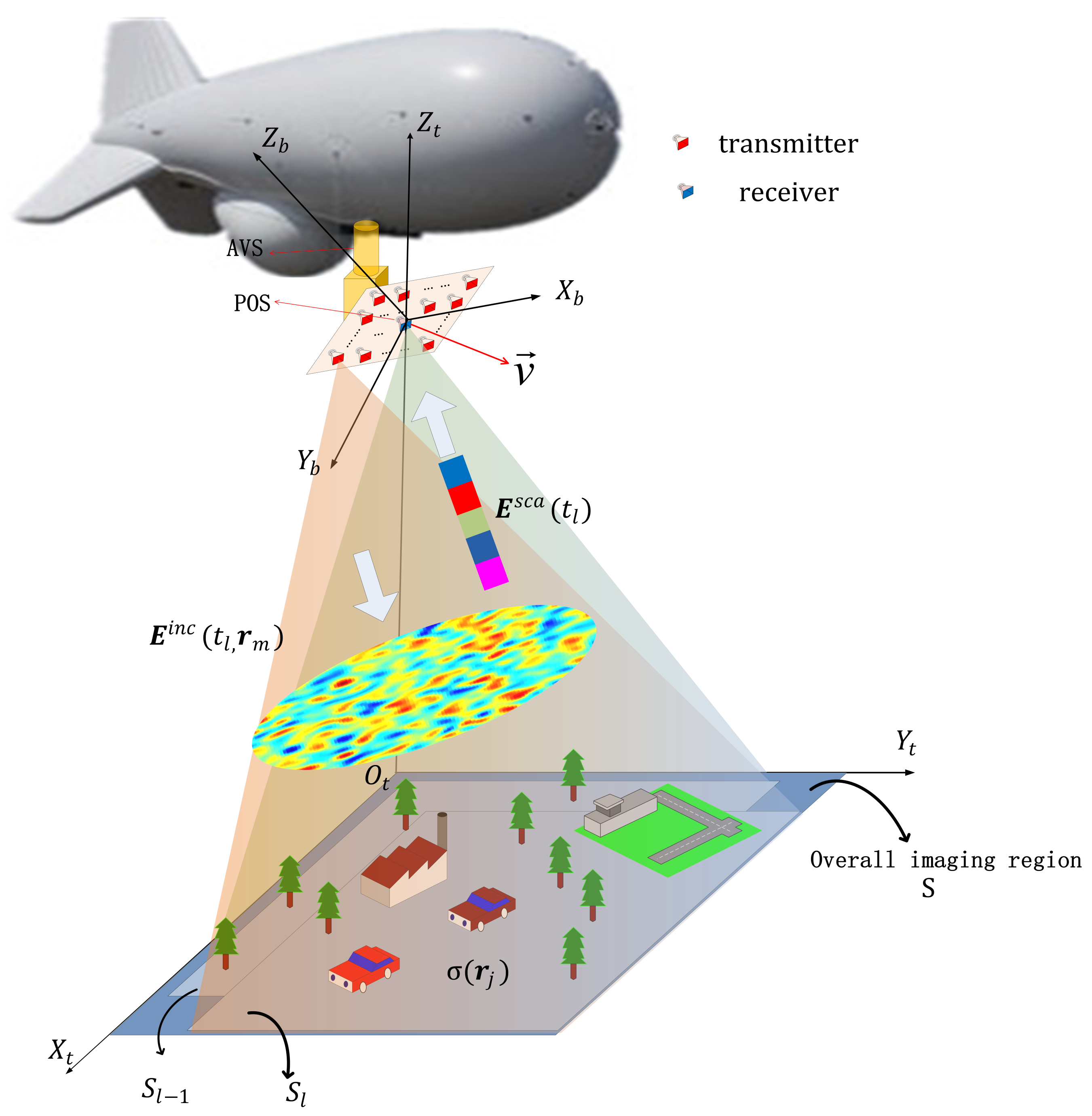
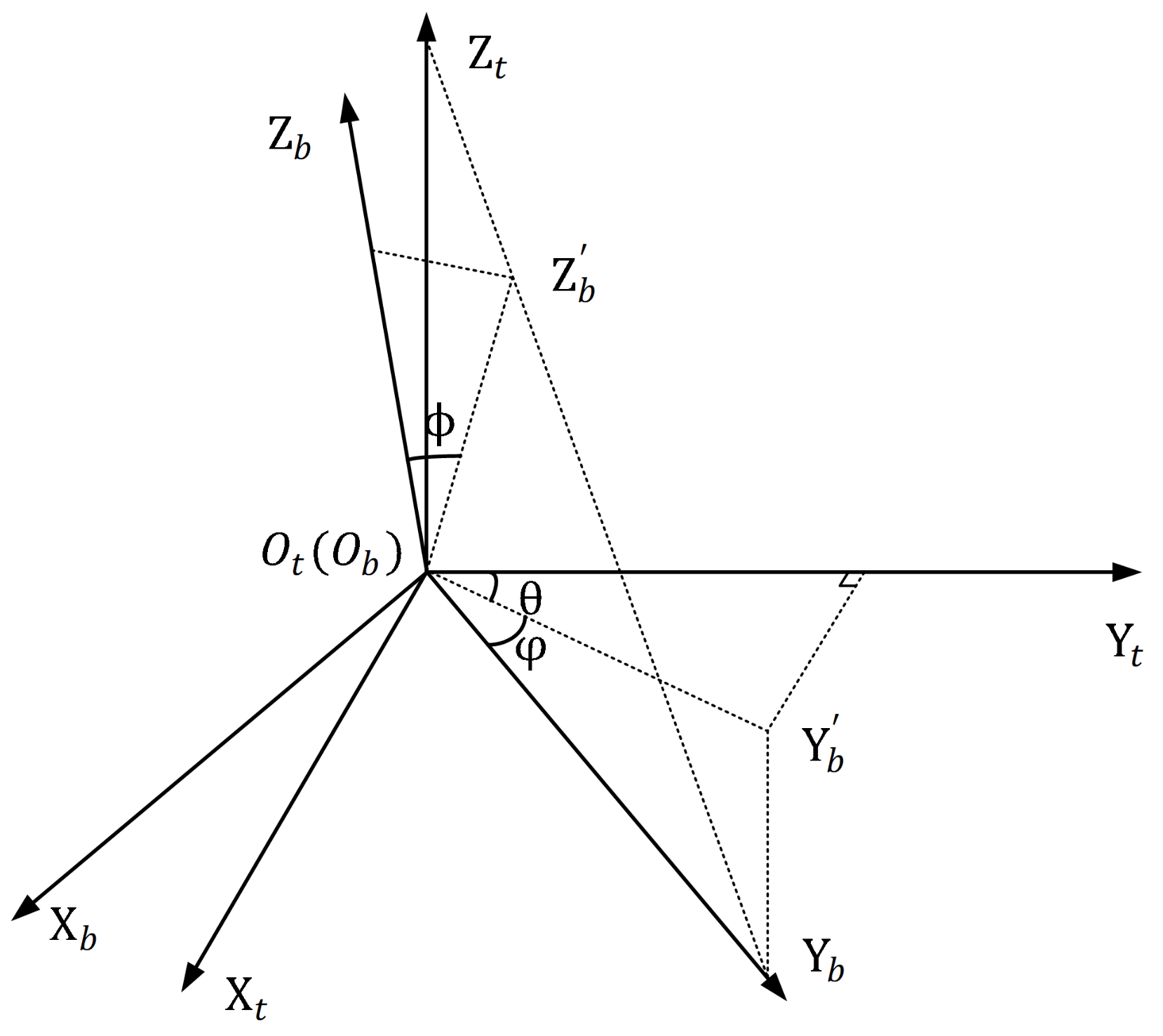
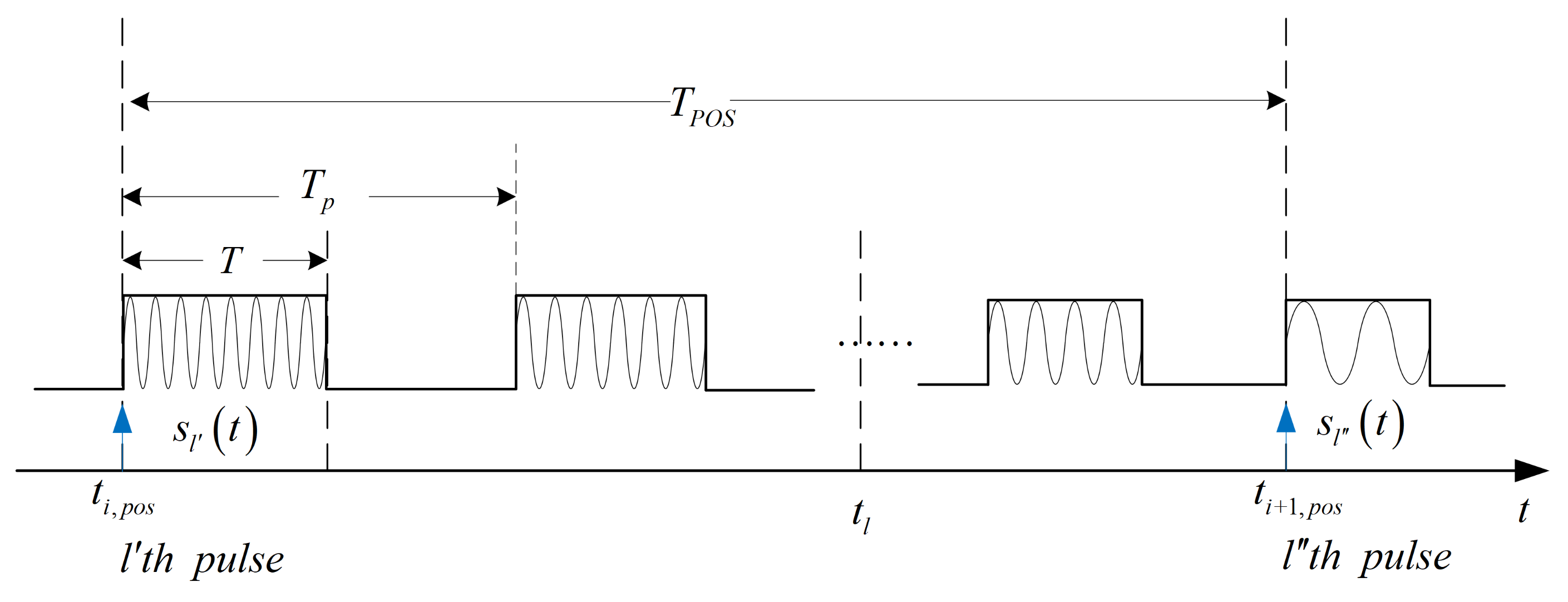
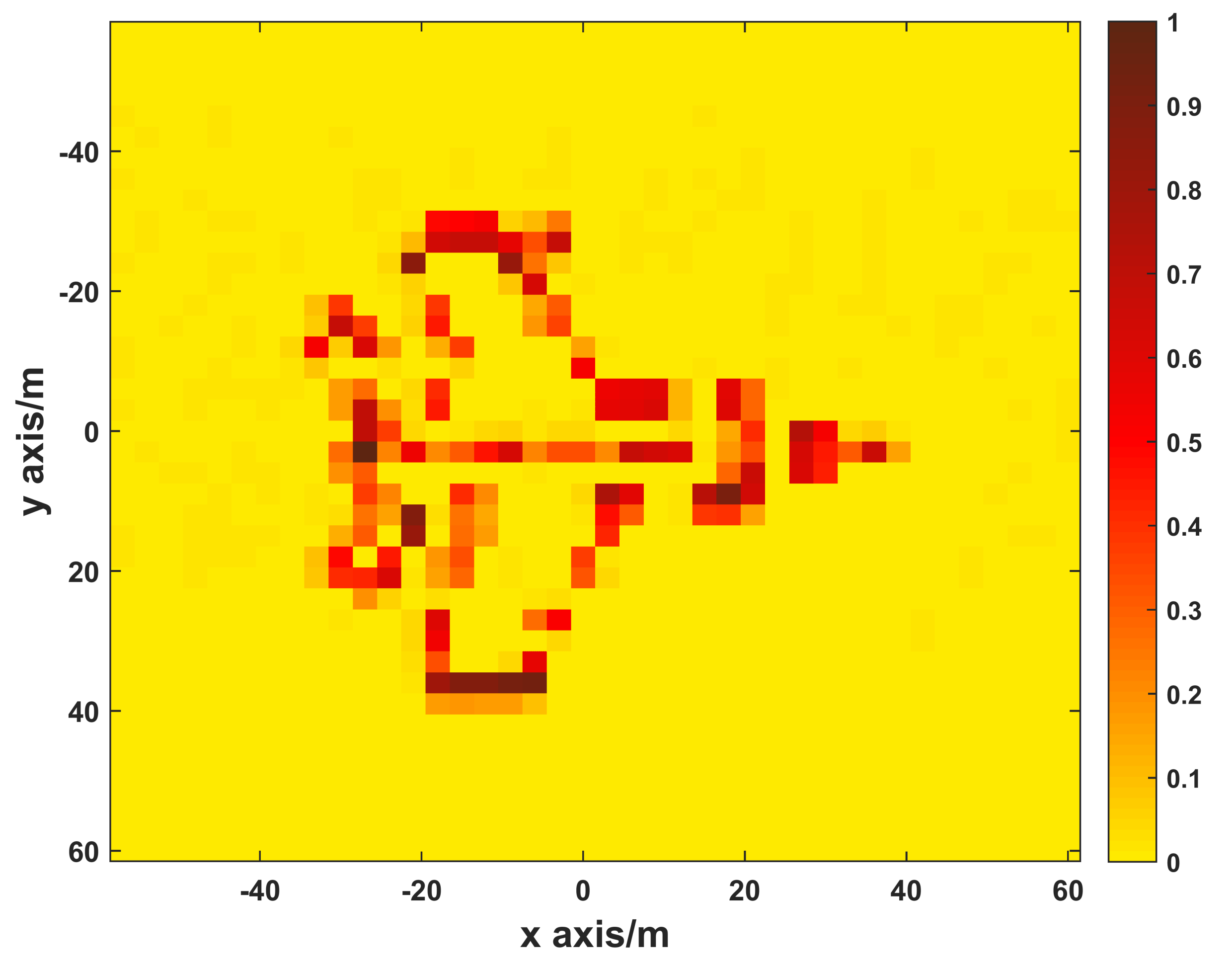
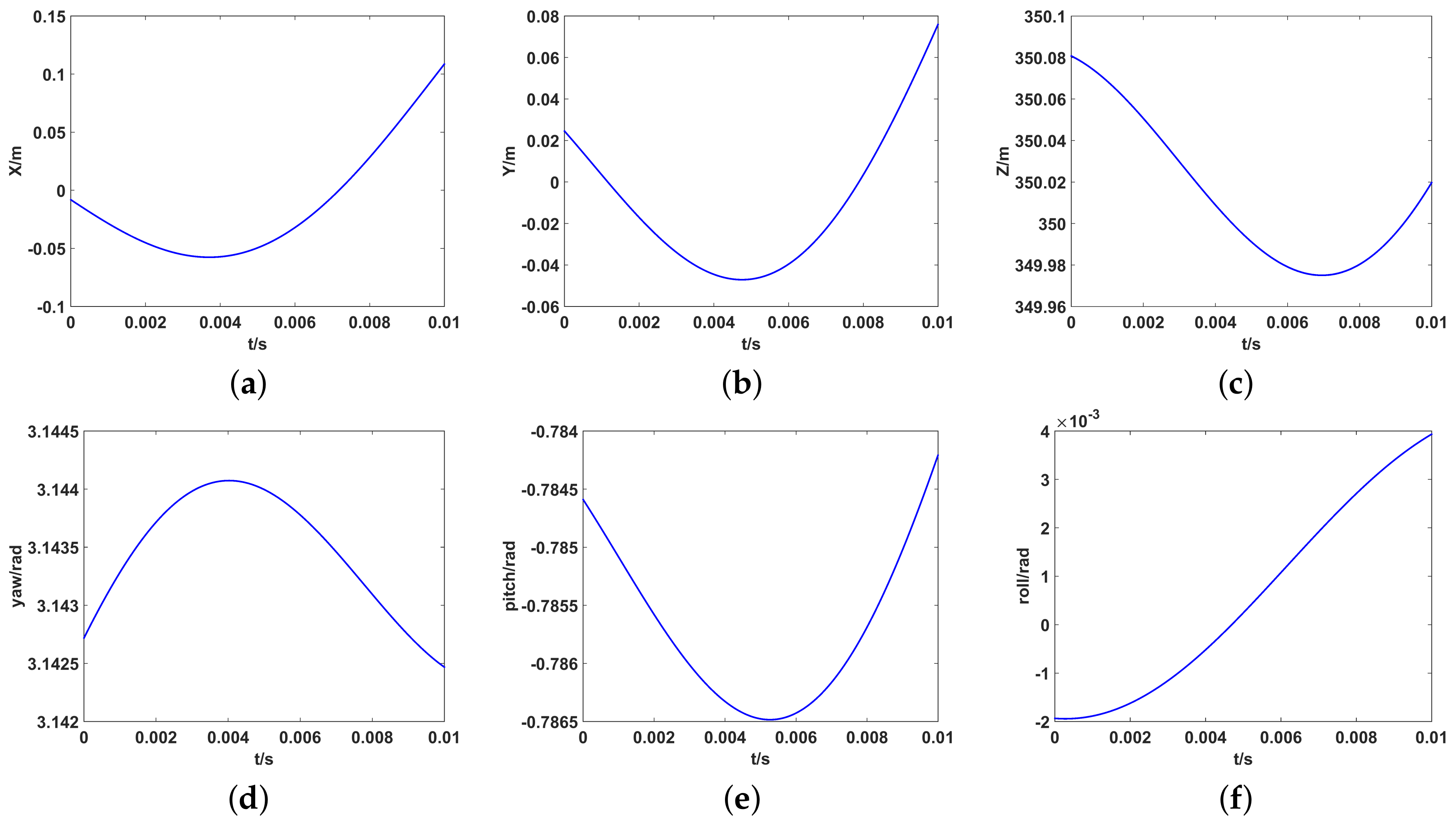


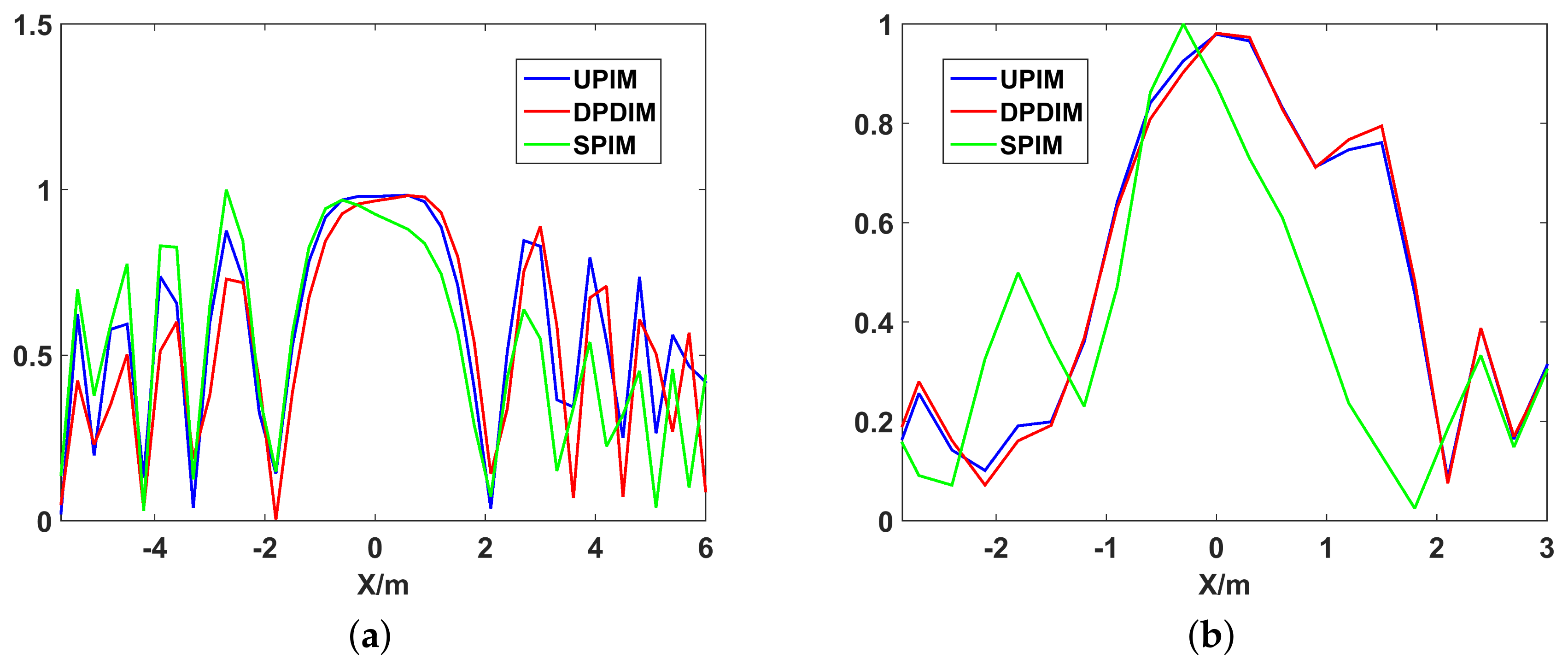


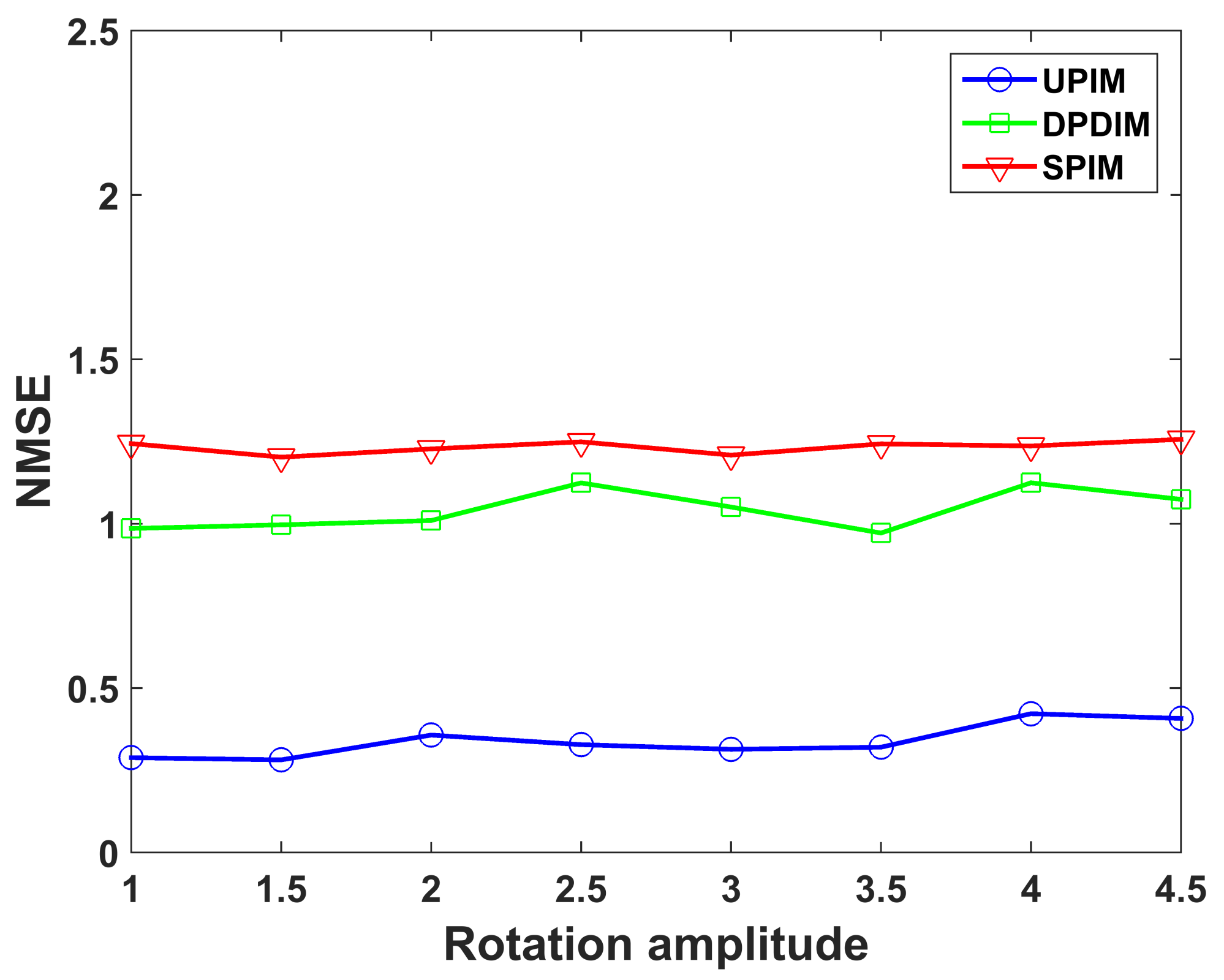

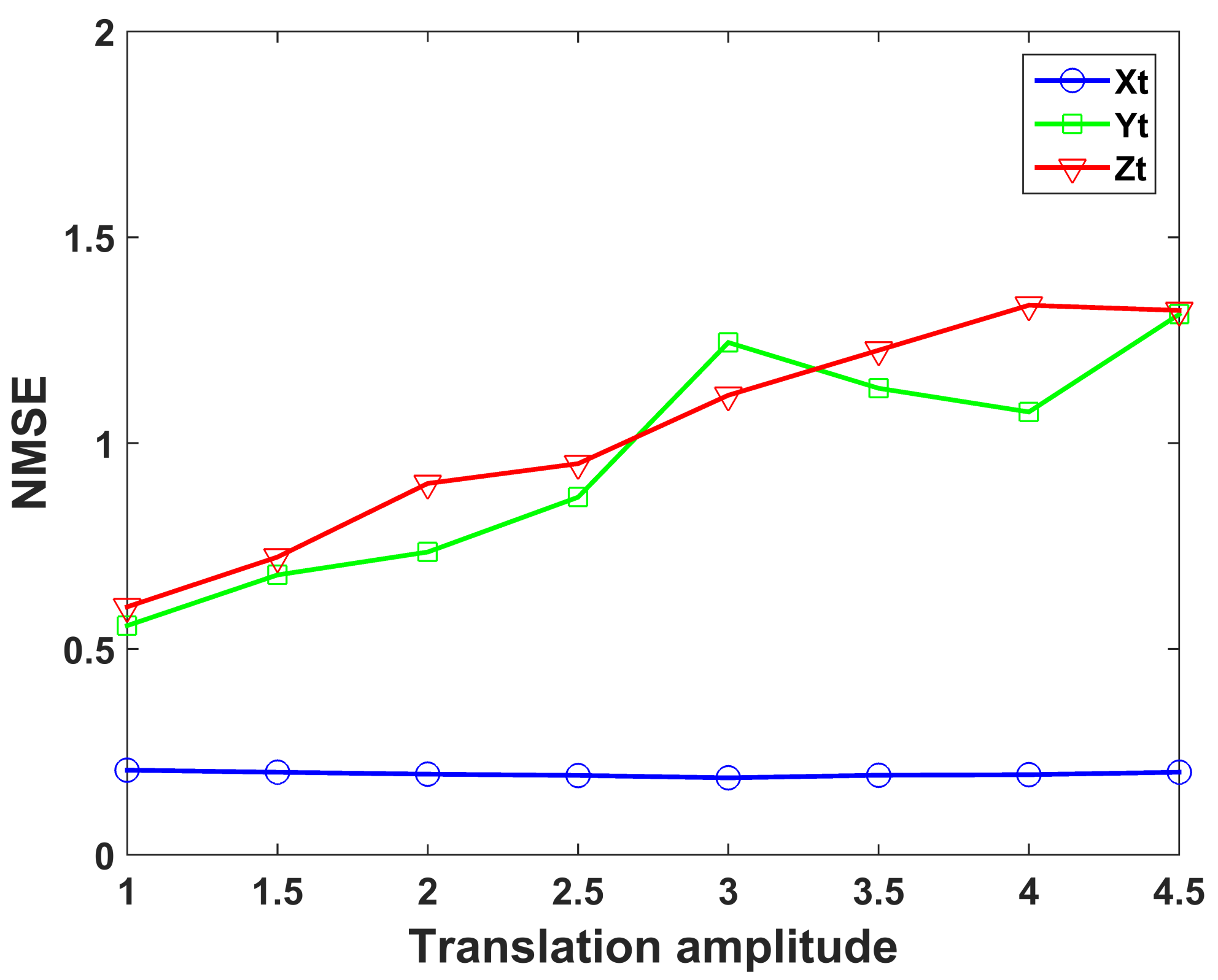



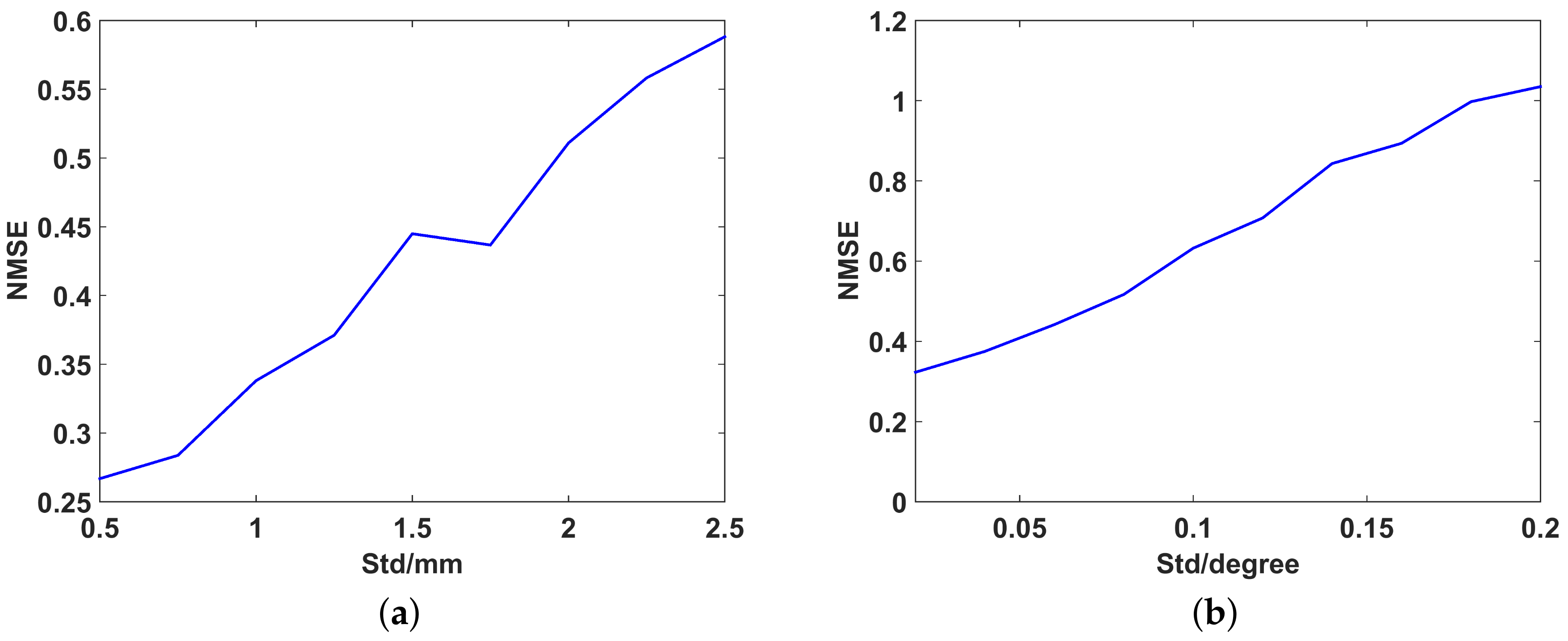
| Simulation Parameter | Value |
|---|---|
| Aperture of antenna array | 1.5 m × 1.5 m |
| Number of transmitting antenna | 25 |
| Height of array center | 350 m |
| Slanting angle | |
| The overall observation area | 120 m × 120 m |
| Beam coverage area by single pulse | 105 m × 105 m |
| Number of grid | 40 × 40 |
| Grid spacing | 3 m |
| Signal form | Random frequency hopping |
| Pulse repetition interval | 5 m |
| Pulse width | 600 ns |
| Bandwidth | 500 MHz |
| Carrier frequency | 10 GHz |
| Total imaging time | 10 ms |
© 2019 by the authors. Licensee MDPI, Basel, Switzerland. This article is an open access article distributed under the terms and conditions of the Creative Commons Attribution (CC BY) license (http://creativecommons.org/licenses/by/4.0/).
Share and Cite
Jiang, Z.; Guo, Y.; Deng, J.; Chen, W.; Wang, D. Microwave Staring Correlated Imaging Based on Unsteady Aerostat Platform. Sensors 2019, 19, 2825. https://doi.org/10.3390/s19122825
Jiang Z, Guo Y, Deng J, Chen W, Wang D. Microwave Staring Correlated Imaging Based on Unsteady Aerostat Platform. Sensors. 2019; 19(12):2825. https://doi.org/10.3390/s19122825
Chicago/Turabian StyleJiang, Zheng, Yuanyue Guo, Jie Deng, Weidong Chen, and Dongjin Wang. 2019. "Microwave Staring Correlated Imaging Based on Unsteady Aerostat Platform" Sensors 19, no. 12: 2825. https://doi.org/10.3390/s19122825





